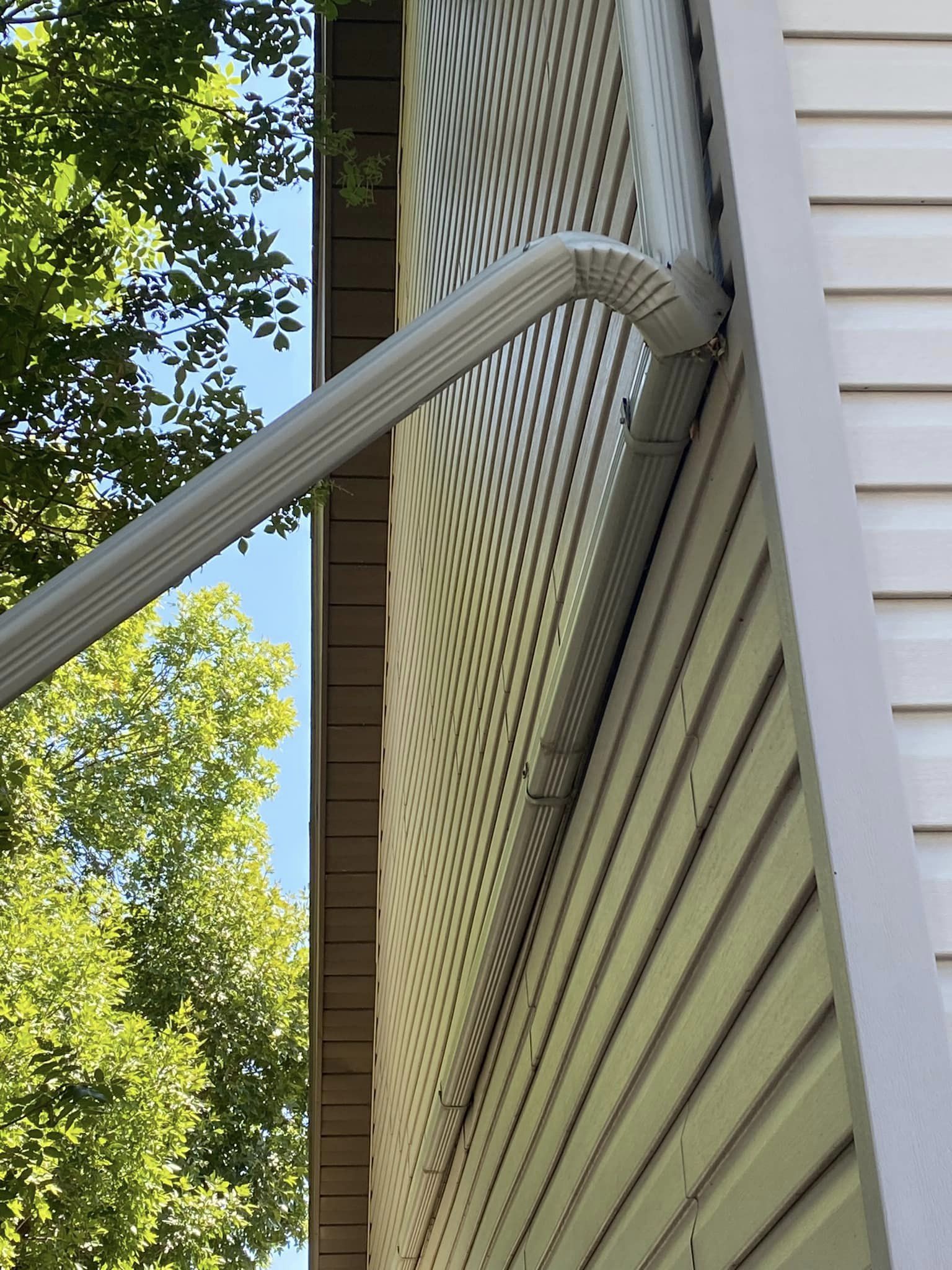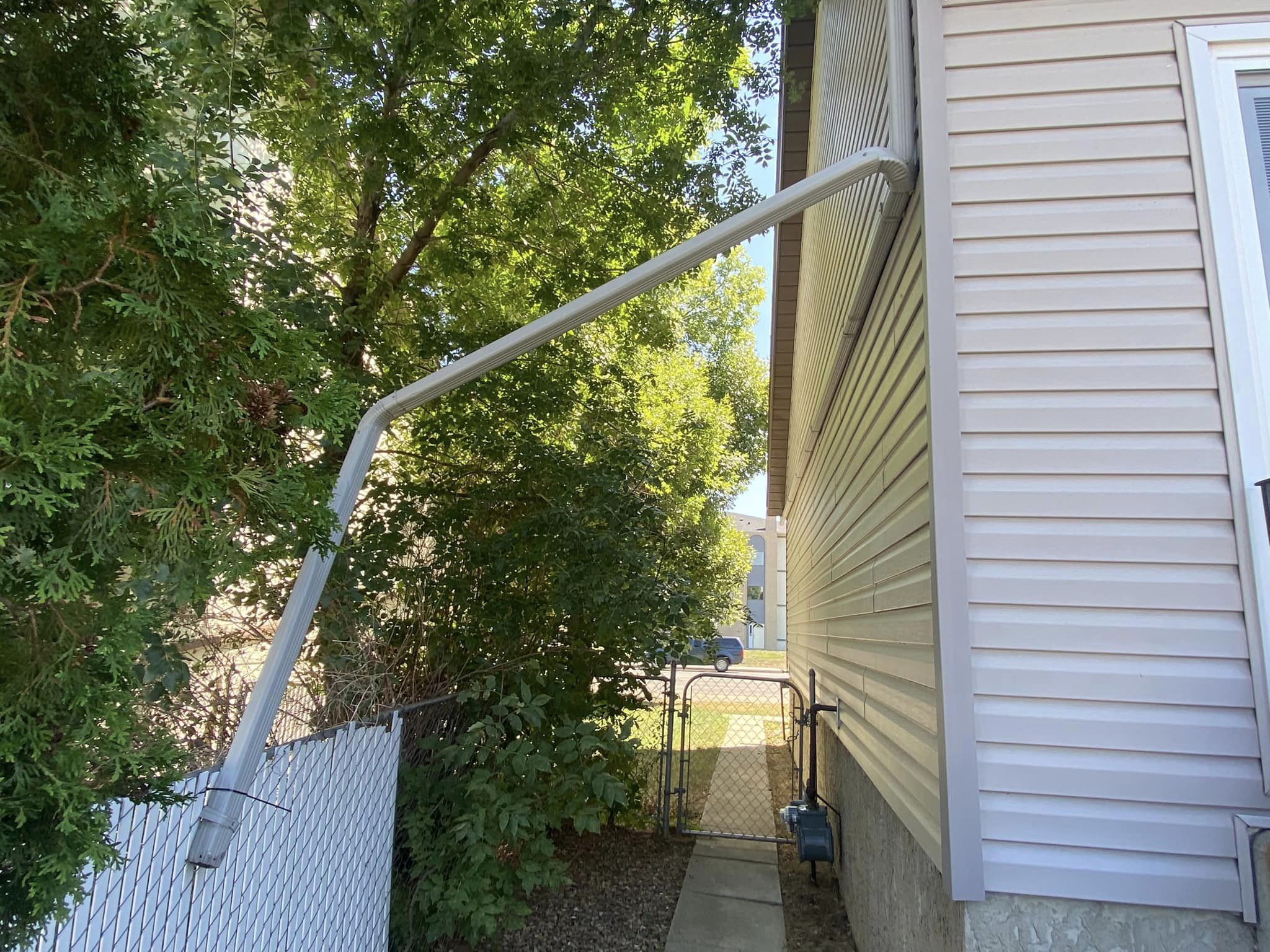Can anyone offer guidance on how to join two intersecting parts of Eavestroughing in a hot, dry climate like Southern Alberta?
11 months ago
Last Updated: July 26, 2024
I need some guidance here. I’ve reached out to two companies about fixing the eavestroughs, but no takers so far. Looks like I’ll have to tackle it myself.
Just bought this house last year. The eavestrough setup is pretty strange. I want to run it straight down the house and then add an elbow where the BBQ is located.
I live in Southern Alberta, so it’s hot, dry, and rain is scarce. What I’m really wondering about is how to connect the two parts where they meet.
Any tips are welcome!



What’s happening here?
I couldn’t agree more, Fonbuena! 😂😂😂😂
Two down spouts are required – one in the front and another one on or next to the corner trim. Having one going down the side of the house is unnecessary.
It looks like they were trying to keep the water away from the foundation, but the design is a bit funky with two separate downspouts, one in the front and one in the back. I’m curious, do you have a basement? I wonder if the previous owners did this because they were having water issues in the basement 🤷
Ugh….”create this” (my bad)
Yep, basement is good. No water issues around here. I’m situated high up on a hill.
Great to hear there’s no flooding! The water I mentioned was actually seeping through the basement wall because the downspout was initially placed “right next to it”… that’s why they set it up that way.
Oh no, I see your point now. I might as well make some repairs and keep it as it is since I’ll be here for another year and plan to sell next summer.
Can you help me understand why there is a horizontal run on the roof above that is peaked? I’m thinking it might be the downspout for the front. If it’s necessary, I think there are Y-shaped connector pieces available.
Hey, so I think we should reroute the water from the front of the house to the front yard. Let’s remove that horizontal piece and maybe use it to finish the downspout in the front or the back. What do you think?
They sell connectors for gutters at the hardware store. Just make sure you get the right one. You can take a piece or a picture with you to the store for reference. You don’t need one for the side of the house, but if you have a gutter on the other side, make sure it does the same thing and directs water away from the house.
No content
Remove the horizontal part and have two separate lines instead. One in the front and one in the back. Extend them all the way down to the ground, use 4″ PVC pipe buried below ground, trench it out about 20″ from the house, and connect it to a pop-up drain.
A simple illustration, but it gets the idea across
This is what we ended up doing…it effectively waters the lawn without causing overwatering to the foundation
Oh yeah, that’s exactly what we did. The only issue is that the landscaper accidentally removes the cap while using the riding lawnmower because the mower’s suction pulls it out and throws it towards the street after the blade shreds it!
Yes, we encountered issues with springs breaking or coming off, usually due to being run over. Depending on where it ends, we use a slotted drain cap secured with two self-tapping screws. It’s a more affordable option to replace as well.
I was thinking the same thing! But I’m wondering, do you have a designated area for cleaning out in case something gets stuck (like leaves), or do you use gutter guards?
There are various styles available for this purpose, such as the one that goes underground. It effectively removes debris before entering the pipe, and the top can be easily removed for maintenance. There are many options to choose from.
From a gutter company will be here next week to take care of it for me 🙂 they quoted $180. I thought it’s best to rely on professionals instead of my own DIY abilities haha
Drain the front yard towards the front
Trench the back yard (following your line) to install perforated PVC or corrugated drain pipe, connect the rear downspout and you’re good to go!
Alright then! 😂
There’s a specific reason for the setup. It’s likely due to sinking and water seepage issues that prompted someone to take that action.
This situation seems pretty silly… 🤣… others have given some excellent advice. My initial thought was to bring them both down at a 45-degree angle and finish with a concrete splash block, but some people mentioned basement and lawn underground pipe options, which might be more suitable.
What on earth is happening here? 🤔
I’d suggest running it along that pathway and following the property line instead. Let’s get rid of that horizontal mess and tackle each one separately. It’s unbelievable that this wasn’t caught during the home inspection.
What’s the reason for having the water so near the house? The design is meant to redirect the water away from the foundation.
That got the green light during inspection?
The water should flow into a storm drain system that carries it at least 10 feet from the house.
This has got to be one of the wildest things I’ve witnessed 🤯
I totally know what you mean, ! 🙈🙈
That setup could be termed as “I am trying to annoy my neighbor with my runoff”.
I’m considering the possibility that the previous homeowner had a rain barrel at the end of the downspout and decided to avoid having it on the pathway.
I would just suggest putting rain barrels wherever possible.
Do you experience freezing winter temperatures in your area? Because if you do, it can be a hassle dealing with ice on your sidewalk.
Sure, you can direct the drainage to the front and back of the yard without needing to dig a trench. Simply place a 4-inch black plastic pipe on the ground’s surface and create a flower bed around the drain. Fill the area with rocks above and below the pipe, then add landscape fabric on top before filling it with dirt and planting.
Remove the part that goes over your house. Instead, have 2 lines: one in the front and one in the back of the house. ‘s suggestion is one of the best I’ve come across here. When redirecting water, make sure to do it correctly by ensuring that the water is diverted far away enough from the foundation to avoid any problems.
If you’re thinking about using the current leader pipes again, then plastic might be a good choice.
No content
Wow, I don’t recall ever seeing that before.